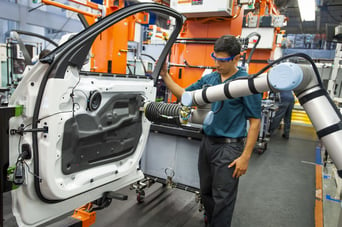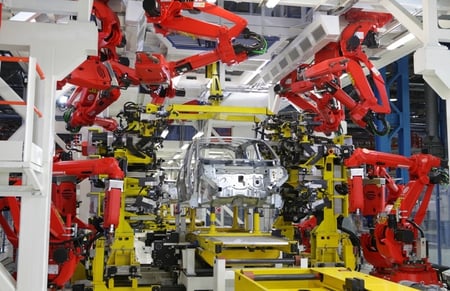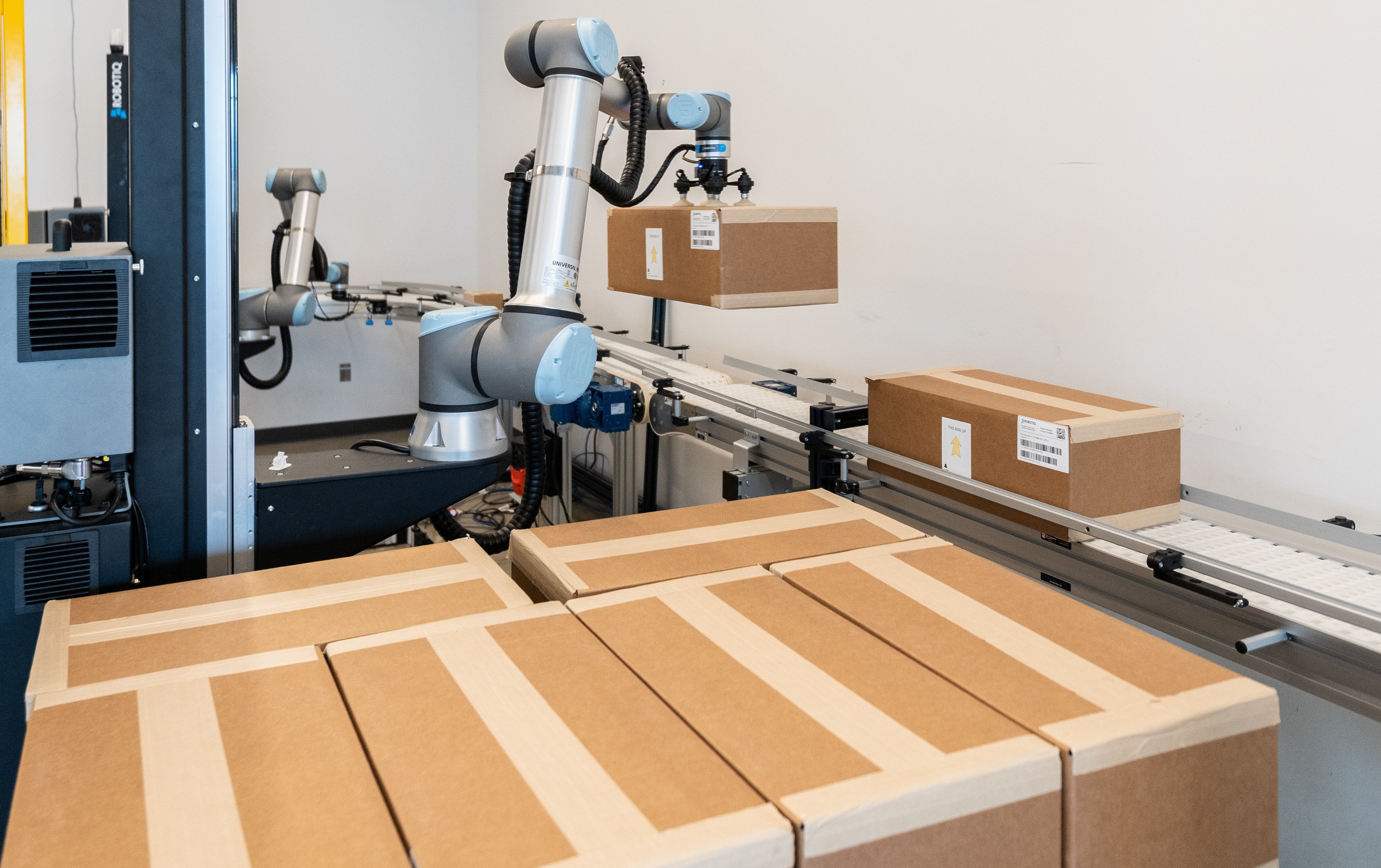Why Collaborative Robots Are Even More Interesting for Global Companies?

Posted on May 19, 2015 11:58 AM. 5 min read time
As we see trends in collaborative robots users shaping up, we have notice several major distinctions you might be interested in. There is the ''workshop'' user that buys a collaborative robot because it is easy to use and to integrate, especially since there is no need to have a complex programming background or safety guarding. The other ''classic'' user would be the global company that is integrating these devices because they will help liberate time on a large scale once the applications have been developed. In this second case, the major concern for the company is not the programming or integration issue, it is more a question of finding the right application to save time/money/energy on a global scale and being able to automate a simple task that can be replicated in many plants all over the world.
Why Collaborative Robots?
You may ask what is the point of integrating a collaborative robot in a plant such as Volkswagen to automate a simple task? Considering the fact that global companies are able to buy a bunch of industrial robots to weld, paint, assemble and transport cars for example. Why would such a big company be interested in using a robot that is smaller, less precise, slower and with a lower payload?
- Safety: In fact, safety is always a big concern when it's time to introduce new technologies (especially robots) in a plant. The advantage of using a collaborative robot is that these robots need minimal or no external safety devices to be sure that the application is safe for the workers. In other words, the robot and all its tools can be fully safe for the workers and the need for classic fencing is irrelevant. So, this means a lot of space savings.
- Applications: Robots we're traditionally used for heavy tasks that we're dangerous for humans. The use of big industrial robots was then a good solution. However, with collaborative robots, smaller tasks can be done. Applications that could be handle by a human, but that still may be inappropriate in terms of human safety. For example applying toxic glue, lifting heavy weight, etc. The robot can then become a helping hand for the human worker and reduce the load or danger for people. Which leads to the next point, repetitive tasks.
- Repetitive Tasks: Most of the tasks we have seen in global companies that were using collaborative robots really involved repetitive tasks. If you think that car companies produce a couple thousand cars per day, you can imagine that the guy working on a given task can do the same motions 10,000 times in a day. Doing this 5 days a week, 50 weeks per year... that is a lot of repetitive strain. Collaborative robots can then help this worker to achieve his tasks by helping him with lifting the load or bringing him a part to be fixed on the car door or whatever can be done by a collaborative robot. The worker is then less stressed by the production beat and can execute his task at a normal pace.
Repetitive tasks then reinforce the two first reasons for integrating a cobot, it is safe for the human to work alongside the robot and it can help the human to execute tasks that may be inappropriate for him.
Cobots vs Industrial Robots
If you start to compare collaborative robots with industrial robots you can't really declare a winner or a loser. It highly depends on the applications you want to execute that will decide your robot choice. However, there is a lot of difference in terms of hardware and software between the two kinds of robots.
Industrial Robots: Baseline, the robot is not designed to be safe. It is made to be fast, strong and repetitive. It can't work alongside humans (except under certain conditions) because of the safety guarding that must be in place around it. The robot is made with rectangular shaped parts, that have pinch points and exposed motors. Most of these robots do not have force sensing so they cannot detect if they hit something. These robots have to be programmed with classic programming methods (coding).
In a huge plant, integrating industrial robots can be complex. Production lines may have to be switched and you may have to rethink the position and the purpose of some machines. Notice that these robot can have small to gigantic payloads and/or reach. They also have a wide speed range to provide fast cycle times.

Collaborative Robots: These fellas are designed to work in collaboration with humans. Their general geometry is composed of round shapes. The robot has limited or no pinch points and everything is integrate into the robot frame. All collaborative robots have force sensors in their joints, so they can ''feel'' force applied on them by an external source (impact). Thanks to these force sensors, the robots can be programmed using hand guiding.
Collaborative robots can be integrated at an existing workshop without any significant modifications. Notice that these robots usually have small payloads and reach (except for the new Fanuc CR-35iA).

We recently put together a comparison grid on the difference between collaborative and industrial robot specifications. Take a look at it to see the clear difference between the two devices.
Why Cobots Are Even More Interesting For Global Enterprises?
- Economies of Scale: Since global companies may have specific tasks in several plants, if these tasks are considered bottlenecks, relieving the pressure could have a domino effect and doing it in many plants multiplies the effect. If the applications have the opportunity to be automated, it may be interesting to spend time in the tech department to develop the application and evaluate the benefit of it.
Another aspect of the economies of scale would be the mass deployment of robots on their global network. Adding robots in many plants can give you a supplementary leverage for the robot and tooling price compared to a user with a single robot. - Global Impact: The cool thing about collaborative robots is that it can be adapted to other applications in the assembly line. In fact, if you are introducing the robot for an adhesive applications, the same knowledge can be used for packaging applications. These things couldn't really be done with industrial robots because a painting robot will always remain a painting robot.
- Manage Complexity: Instead of going all out and changing the production line from A to Z, you can simply implement small robotic projects in certain places and evaluate their impact. No need for a major investment, shut downs and production stops.
- Motivated workforce: Being part of the ''younger workforce'' myself, I can confirm that it is more motivating to say that you are going to work in robot maintenance or robot management than placing valves on a motor block 35hrs a week. Young workers (and even older ones) are looking for motivating jobs that will challenge their abilities. Working with robots can increase the interest in manufacturing jobs over the classic assembly line job.
Now that you’re convinced, how can you take advantage of collaborative robots in your workshop?
If you want to learn more about the different types of collaborative robots, I recommend you take a look at our comparison grid on cobots. This grid regroups most collaborative robots on the market today and will help you figure out the different specs you need to look at for your application.








Leave a comment